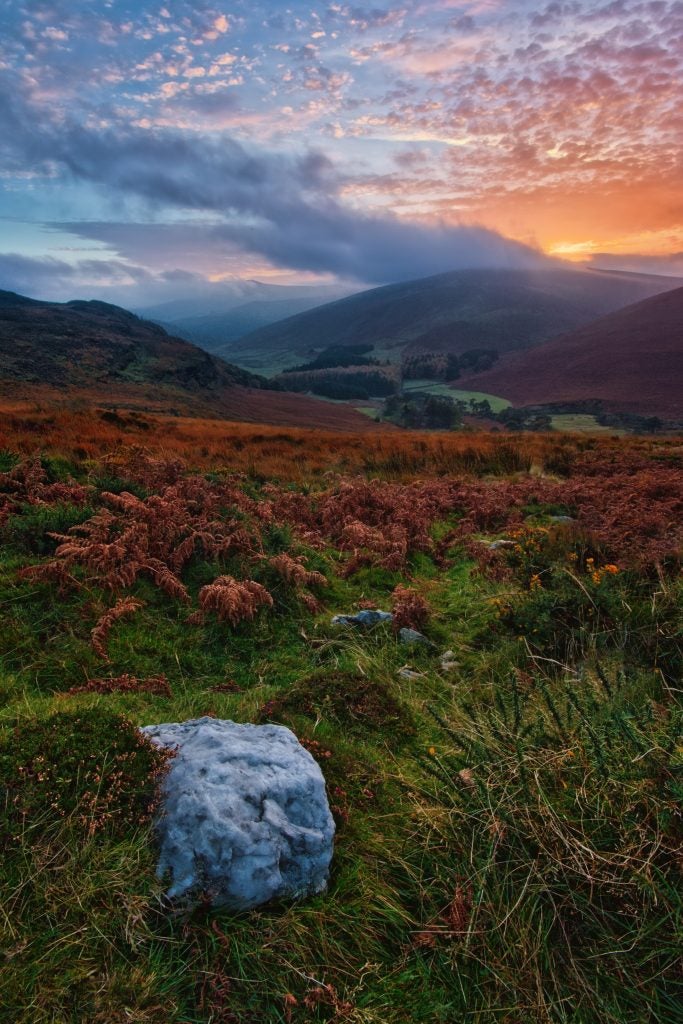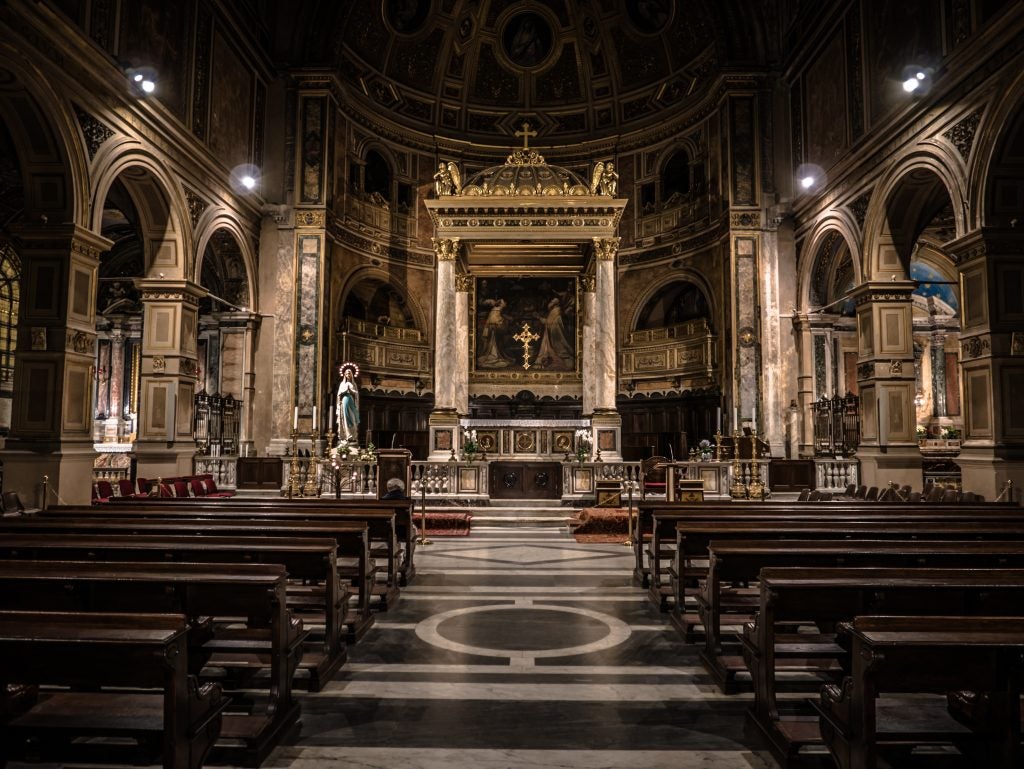Author’s Note: When reading this article, please keep in mind that the purpose of sharing this information is to demonstrate that different cultures have different views of sexuality and to describe the views of one culture that was studied many decades ago: Inis Beag, Ireland. This article does not describe the general culture of Inis Beag or Ireland today.

By looking at examples of human sexuality in different societies, in this case Inis Beag of Ireland, it allows for a wider understanding of the term sexuality and its diverse meanings along an ever-expanding continuum. It is important to be aware that there is no singular experience of sexuality and that there is no definitively right or wrong, good or bad experience of sexuality.
By looking at this as well as other societies’ experiences and understandings of sexuality, it shows how the role of culture greatly impacts different individual’s sexuality through aspects such as education, religion, media, family, and community.
Historical Background and Research
The vast majority of information about the island of Inis Beag comes from the research of cultural anthropologist John C. Messenger, collated in his book Inis Beag, Isle of Ireland. From the late 1950s to the late 1960s, Messenger and his wife lived on and studied the island and its inhabitants for a period spanning over 13 years.1 Inis Beag is a pseudonym given to the small island, situated off the west coast of Ireland, in order to protect the anonymity of the island and its people. At the time of the study, Inis Beag could be defined anthropologically as a peasant community, due to the fact that the livelihood of the islanders was largely based on pre-industrial agriculture and subsistence-based living. Despite the island’s size, with only 1,440 acres of land and 350 residents, it was a strong Irish Catholic community which was home to a wealth of religious artifacts and locations including three chapels, two monasteries, a sacred well, and numerous tombs from the Middle Ages.2
One of the most notable things observed by John C. Messenger while studying the island was the taboo nature of the topic of sexuality and sexual behaviour itself. The extreme nature of this led him to regard the island of Inis Beag as the most sexually repressed place in the world.1
Messenger looked at a variety of aspects of sexuality:
- Children and Sexuality
- Sex Education
- Youth and Courtship
- Marriage
- Marital Sex
- Men
- Women
Therefore, in order to demonstrate different societies’ understanding of sexuality and the cultural factors that shape this, the case study of Inis Beag will be used and the aforementioned aspects of Messengers work on sexuality in Inis Beag will be explored.
Children and Sexuality

The separation of boys and girls began at an early age and extended into adulthood in almost all realms of life. Even siblings of different sexes were separated from early infancy; for example, care was taken to ensure that infant bodies were always covered from their siblings.1
Although mothers were reported to show attention to their children, in particular their sons, physical displays of affection such as kissing were very rare and were substituted by verbal affection when the child grew out of infancy. As well as this, any forms of sexual expression displayed by a child such as masturbation, mutual exploration, the use of certain sex-related words, and open urination or defecation were punished by parents.1
Parents provide practically no sexual instruction to their offspring; instead they believe that after marriage nature took its course in terms of sexual relations. The few mothers that admitted to giving sexual instructions to their children stated that they were unable to give full or accurate explanations. Boys were said to be better advised in sexual matters than girls, despite their sources of information being older boys and observing farm animals.1
Sex Education
The people of Inis Beag had no sex education or even permission to use language that was suggestive of sexual matters. This was reflected in the lack of understanding they had about natural experiences of sexuality such as menstruation, orgasms, childbirth, and menopause.1
During the period when this study took place, there was only one “national school” on the Island, in which 90 pupils were instructed by 3 teachers. The teachers, who were from local descent, did not attain the knowledge or desire to teach children about sex education, allowing it to be completely ignored from the school curriculum, which was in line with the conservative nature of the island.1

Another source of education that was considered was the Catholic Church. Inis Beag was a highly religious Irish Catholic community that promoted sexual puritanism — strict religious and moral attitudes about sex. As well as the usual church services, the influence of visiting missions was also considered. Visiting missions, an event that took place every 3-5 years, consisted of the presence of two highly regarded priests who would visit the island in what was considered a momentous week-long occasion. The priests would hold Mass every morning and preach long sermons every afternoon and night that were largely based on the topic of “controlling one’s passions”; these events continued to fuel the island’s sexual repression.1
Youth and Courtship
Nudity was regarded with fear and disgust given its role in sexual conduct. People were so afraid of nudity that cases were reported in which men died due to their fear of undressing in front of a nurse or doctor. 1
The island in general was very sexually conservative, leaving little opportunity for young, unmarried people of the opposite sex to interact. Premarital sex was forbidden, there was no tradition of “dirty” jokes, and even the main style of dancing allowed minimal bodily contact between couples. 1
Marriage

Late marriage and celibacy were common in Inis Beag. Part of this was because sex and marriage were seen as undesirable, especially by men. Men did not want to leave their community of male solidarity or have to deal with the responsibility of marriage; therefore, when men did get married, they attempted to keep as much of their bachelor lifestyle as possible.1
Most men were heavily dependent on their mothers from childhood and were used to strong female figures who ran the household, taking on almost all responsibilities and burdens. Therefore, when men got married they willingly accepted their wife as the head of the household in terms of important decisions such as handling the finances. Women were expected to be excellent wives; marriages were not based on a relationship of intimacy but of accommodation.1
Marriage on Inis Beag was either established through secret bargaining between families, which could last for weeks, or a man would visit the home of his chosen wife-to-be after dark to propose and negotiate a marriage. In the case of the latter, once the terms of the marriage had been settled, the families’ relatives were summoned immediately and a night-long party was held to celebrate.1
However, the wedding ceremony had to wait until the genealogy of the two families was checked by the parish priest to determine the degree of biological separation of the couple, ensuring the health of future children of the island. Once the marriage was condoned, the wedding ceremony took place. Wedding ceremonies on Inis Beag followed the general traditional structure of most western Christian societies; however, the couple did not engage in a ceremonial kiss at all.1
Marital Sex
The people of Inis Beag shared a widespread belief that sex was unsafe and unhealthy; many people did not want to participate in it at all. However, it was seen as the duty of married people to have sex, solely for reproductive purposes. Sex was performed in missionary position only; both partners continued to wear as much clothing as possible while engaging in sexual behaviours and tried to finish as soon as possible. Foreplay was limited to light kissing and groping of the buttocks. No oral sex took place; however, couples may have engaged in anal sex by accident due to their lack of anatomical knowledge.1
Women were expected to tolerate but not gain any pleasure or enjoyment from sexual relations. There was great ignorance about women’s ability to orgasm, and the knowledge that was circulated considered orgasming a deviant behaviour.1
Men
Men believed that sex was a debilitating activity and purposely did not engage in sexual behaviours the night before they were due to take on a task that required high energy levels.1
Despite the men of Inis Beag being almost as equally sexually repressed as the women, the men admitted to commonly masturbating. As well as this, men were always the ones to initiate sex, whereas their wives remained passive during the entire experience. Men would often orgasm quickly and then fall asleep almost immediately after sexual intercourse.1
When asked about sexual practices other than the missionary position, the men of Inis Beag displayed no knowledge of such activities and showed disbelief at the thought of other practices.1
Women
In regard to women’s sexual lifecycles, most things not understood were equated with disease or mental illness, further perpetuating sexual naivety and misunderstanding. For example, it was believed that menopause induced insanity and that the physical symptoms of menopause (such as hot flashes, migraines, faintness, and anxiety) seen in western societies were, for Inis Beageans, seen as signs of madness. Women were reported to have retired from life in their mid-forties due to these supposed symptoms of insanity, and some confined themselves to their bed until the day they died.1

Due to the lack of sex education, other issues such as menstruation and childbirth were also traumatic and confusing events for women. This led to women not being approached sexually during menstruation or in the 6 months after childbirth as they were seen as dangerous to men at these times.1
Women often expressed jealousy and resentment against the less time-consuming and taxing workload of the men, as well as the greater freedom and leisure time their husbands enjoyed. They also complained that the constant bearing and rearing of children, due to sexual demands of their husbands and the reproductive expectations of the Church, increased their workload, further restricted their freedom, and perpetuated the poverty of their families. 1
Conclusion
Despite the fact that Inis Beag, at the time of Messenger’s study, is described as the most sexually repressed place in the world, this must be considered both within and outside the context of their culture. Their sexual behaviour is in-line with their sexual expectations, and as long as these expectations are not altered by outsiders’ projections of greater happiness in more liberal socio-sexual arrangements, the people of Inis Beag may be considered content and happy with their sex lives.
As well as this, due to this article focusing on the topic of sexual repression in Inis Beag, it does not acknowledge the other aspects of the islanders’ lives in great detail. Therefore, it should be noted that the people of Inis Beag still have customs that are relative to more liberal societies, such as their own sense of humor based largely on practical jokes, as well as a strong sense of community seen in the sociable nature of their local pubs and bars, even though this is mostly seen to be the activities of males.3
There is a lack of recent research on the island of Inis Beag; therefore, it cannot be said what the islanders’ experience of sexuality is like today. Despite this, Inis Beag remains an excellent historical case study that shows how diverse many societies’ understandings of sexuality are and how culture helps to shape these understandings.
References
- Messenger, John C. Inis Beag, Isle of Ireland. Holt, Rinehart & Winston, 1969.
- Messenger, John C. Inis Beag Revisited: The Anthropologist as Observant Participator. Salem, Wisconsin: Sheffield, 1989.
- Messenger, John C. “The Irish Comic Tradition of Inis Beag.” Journal of the Folklore Institute, vol. 15, no. 3, 1978, pp. 235-25.
Last updated: 29th April 2018.
